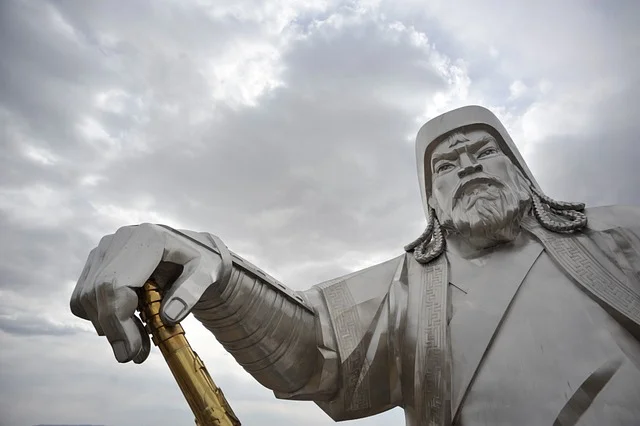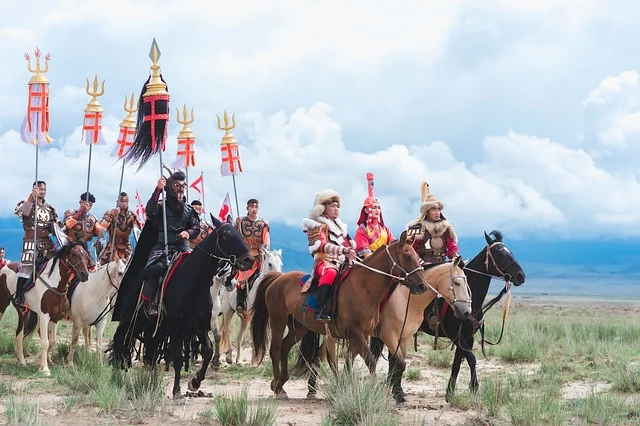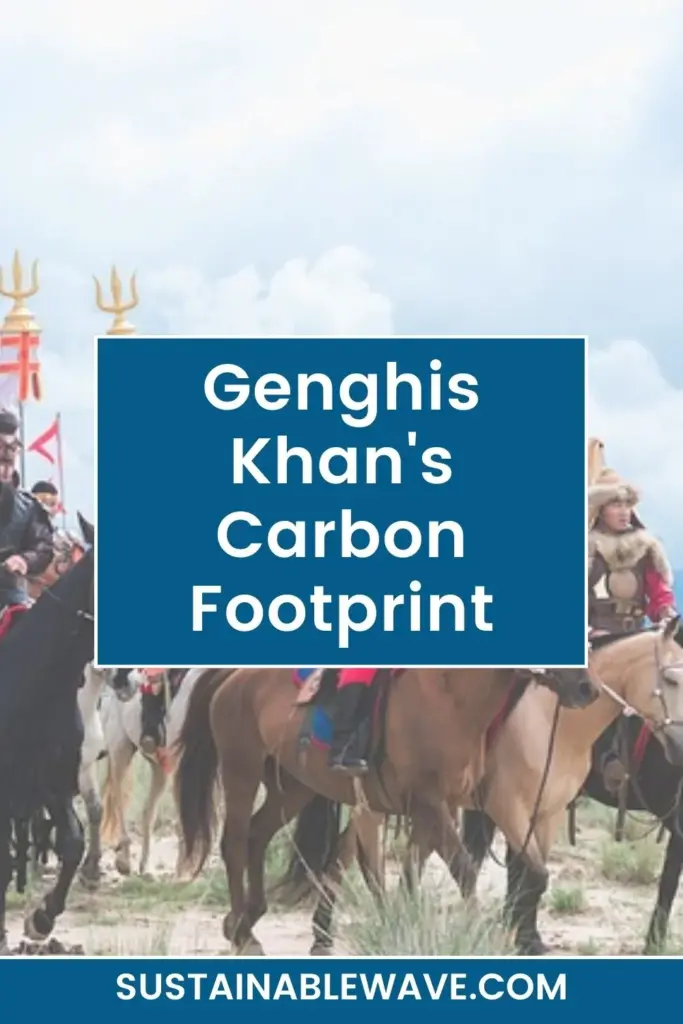When one thinks of Genghis Khan, the images of a fierce warrior and the founder of the vast Mongol Empire often come to mind. However, in the age of climate awareness, a rather unusual question has gained traction: What was Genghis Khan’s carbon footprint?
According to a study, when the Mongols were busy conquering back in the day, the forests sucked in a whopping 700 million tons of carbon. Funny thing? That’s the same amount of carbon we now spit out every year just from our love affair with gasoline.
This article delves deep into the ecological footprint left by the Mongol horde, challenges conventional wisdom, and offers a comprehensive perspective on the environmental legacy of Genghis Khan.
Genghis Khan’s Carbon Footprint: The Basics

Understanding the environmental impact of a historical figure like Genghis Khan requires a nuanced perspective. The Mongol Empire spanned vast territories and played a pivotal role in connecting the East and West. But did this vast empire also result in a significant carbon imprint?
In the 13th century, the Mongols, led by Genghis Khan, conquered territories from the Pacific Ocean to Central Europe, covering 22% of the Earth. Their invasions resulted in the deaths of an estimated 40 million people—four times the combined fatalities of WW1 and WW2.
Surprisingly, this brutal spree had an ecological silver lining. As vast regions depopulated, cultivated lands reverted to forests, absorbing 700 million tonnes of atmospheric carbon—equivalent to today’s annual emissions.
Ironically, this ruthless leader inadvertently became history’s unexpected champion of global cooling.
Calculating carbon emissions for ancient civilizations isn’t straightforward. However, by analyzing aspects like deforestation, agricultural practices, and wartime activities, we can get a clearer picture of the Mongols’ ecological contribution.
The Environmental Impact of Mongol Conquests
The Mongol conquests, led by Genghis Khan and his successors, were arguably some of the most extensive and impactful military campaigns in history. These conquests transformed the geopolitical landscape, forging the vast Mongol Empire.
But alongside these profound societal changes came significant environmental repercussions.
The Scorched Earth Tactic
A key military strategy used by the Mongols was the “scorched earth” tactic. This involved not only defeating enemy armies but decimating their resources to prevent any resurgence. Towns, villages, and fields were often set ablaze, leading to massive carbon emissions.
But beyond the immediate emissions from these fires, the longer-term implications included soil degradation and the loss of agricultural lands, which would have taken years, if not decades, to recover.
Water Management and the Mongols
While the scorched earth tactic had detrimental impacts, the Mongols also undertook significant irrigation projects in the territories they conquered. These projects transformed arid lands into arable farming regions, enhancing food security.
However, these large-scale irrigation projects also modified local ecosystems, affecting native flora and fauna.
Displacement and Deforestation
The movement and resettlement of populations after conquests often led to deforestation. New settlements required timber for construction and fuel. Over time, these acts of deforestation could alter local climates and biodiversity.
Genghis Khan: An Unlikely Environmentalist?

At first glance, categorizing a ruthless conqueror like Genghis Khan as an environmentalist might seem far-fetched.
However, a deeper look into the practices and policies of the Mongol Empire reveals a complex relationship with the environment.
Yam System: Efficient Communication Routes
The Yam system was akin to the ancient version of a postal service. Using a series of relay stations, it ensured rapid communication across the vast Mongol territories. This efficient network reduced the need for officials and messengers to undertake long journeys repeatedly, which in turn minimized the carbon footprint associated with transportation.
Protection of Natural Resources
There are historical accounts that suggest Genghis Khan enacted laws to protect natural resources. For instance, the felling of trees was regulated, and hunting during certain seasons was prohibited. Such practices highlight an early understanding of the concepts of sustainability and conservation.
Promotion of Knowledge and Science
The Mongol Empire, particularly under the leadership of Genghis Khan’s grandson, Kublai Khan, was a proponent of knowledge and science. Scholars and artisans from various fields were patronized, leading to advancements in agriculture, engineering, and medicine. This focus on knowledge could have indirectly promoted more efficient and environmentally friendly practices across the empire.
Comparing Historical Figures and Civilizations
Drawing parallels between historical epochs and figures can offer fresh perspectives on their environmental impacts.
Roman Empire vs. Mongol Empire
Both the Roman and Mongol empires left indelible marks on history. While the Romans are renowned for their engineering marvels, such as aqueducts and roads, these constructions had environmental costs. Quarrying for stone and the felling of trees for construction would have contributed to deforestation and habitat loss.
In comparison, the Mongols, with their nomadic lifestyle, had a more transient interaction with their environment. Their temporary yurts, made from felt and animal hides, had a lesser ecological footprint than the permanent stone structures of the Romans.
Ancient Chinese Dynasties vs. Mongol Empire
The Chinese dynasties, particularly the Tang and Song, were marked by urbanization, extensive canal networks, and deforestation for agriculture. While these dynasties made remarkable achievements in art and science, their settled agricultural practices had a continuous environmental impact.
The Mongols, on the other hand, while they did establish cities, maintained a balance with their nomadic roots, leading to a different kind of environmental interaction.
Modern Carbon Emissions: A Stark Contrast
In the contemporary era, the industrial revolution has ushered in unprecedented carbon emissions. The burning of fossil fuels, large-scale deforestation, and rapid urbanization dwarf the environmental impacts of ancient civilizations. Today’s challenges, while influenced by historical precedents, are unique in their magnitude and urgency.
Final Words

Genghis Khan’s carbon footprint offers a riveting exploration of the environmental implications of historical events.
While the Mongol Empire undeniably had an environmental impact, it also fostered practices that resonated with sustainability.
As we grapple with our own era’s environmental challenges, perhaps there are lessons to be learned from the vast steppes of the Mongol heartland.
I’m Thomas, the owner of SustainableWave. Passionately promoting a sustainable planet. With experience in various eco-roles, I’ll share green tips, sustainability hacks, and personal eco-journeys on my blog.






